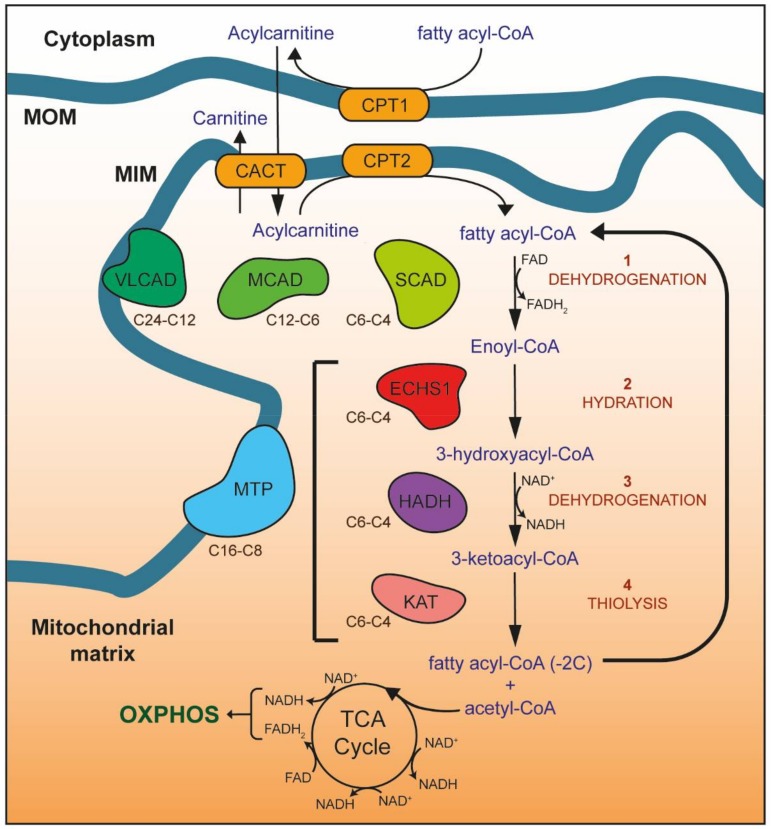Figure 1.
Mitochondrial fatty acid β-oxidation (FAO). Enzymes of the carnitine shuttle system (yellow) are responsible for transporting fatty acyl-CoA esters into the mitochondrial matrix as acylcarnitines. Carnitine is added to fatty acyl-CoAs by carnitine O-palmitoyltransferase 1 (CPT1), forming acylcarnitines that are transported into the mitochondrial matrix by the carnitine acylcarnitine translocase (CACT). Once inside the mitochondrial matrix, carnitine O-palmitoyltransferase 2 (CPT2) removes the carnitine to regenerate the fatty acyl-CoA ester. Four reactions (1–4) then occur for each round of FAO, catalyzed by enzymes with different carbon chain length specificities (as shown): 1—dehydrogenation of fatty acyl-CoA esters by very long-chain (VLCAD), medium-chain (MCAD), and short-chain (SCAD) acyl-CoA dehydrogenases (shown in green) to form enoyl-CoA, 2—hydration of enoyl-CoA by the mitochondrial trifunctional protein (MTP, blue) or short-chain enoyl-CoA hydratase (ECHS1, red) to form 3-hydroxyacyl-CoA, 3—dehydrogenation of 3-hydroxyacyl-CoA by MTP or hydroxyacyl-CoA dehydrogenase (HADH, purple) to form 3-ketoacyl-CoA, 4—thiolysis of 3-ketoacyl-CoA by MTP or 3-ketoacyl-CoA thiolase (KAT, pink). The resulting fatty acyl-CoA is shortened by two carbons, with the generation of acetyl-CoA, NADH and FADH2. NADH and FADH2 provide electrons for OXPHOS, while acetyl-CoA enters the TCA cycle to generate further NADH and FADH2. The shortened fatty acyl-CoA undergoes further rounds of FAO until only two acetyl-CoA molecules remain. MOM, mitochondrial outer membrane; MIM, mitochondrial inner membrane.

